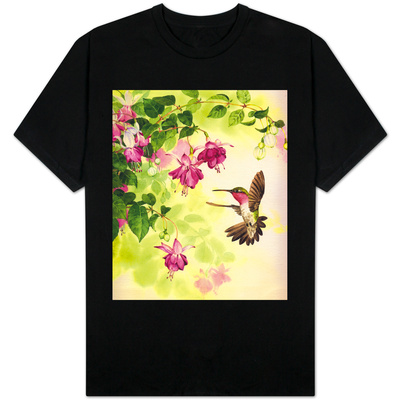Orange Jewelweed (Impatiens capensis), Ottawa, southeastern Ontario, east central Canada: D. Gordon E. Robertson, CC BY-SA 3.0, via Wikimedia Commons @ https://en.wikipedia.org/wiki/File:Orange_Jewelweed,_Ottawa.jpg
Phlox drummondii 'Grammy Purple and White', US Highway 98, about 10 miles southeast of Dade City, west coastal Florida: Malcolm Manners (mmmavocado), CC BY 2.0, via Flickr @ https://www.flickr.com/photos/mmmavocado/5544966227
Kolkata, West Bengal, eastern India: J.M. Garg, CC BY-SA 3.0, via Wikimedia Commons @ https://en.wikipedia.org/wiki/File:Balsam_I_IMG_9566.jpg
Albuquerque, Bernalillo County, north central New Mexico: Amaling, CC BY-SA 3.0, via Wikimedia Commons @ https://commons.wikimedia.org/wiki/File:Black-chinned_hummingbird_female_02.JPG
Del Rio, Val Verde County, west central Texas: Clinton and Charles Robertson, CC BY-SA 2.0, via Wikimedia Commons @ https://commons.wikimedia.org/wiki/File:Hummingbird_Black-chinned,_Male.jpg
Patapsco Valley State Park, near Catonsville, Boltimore County, north central Maryland: Fritz Geller-Grimm, CC BY-SA 2.5, via Wikimedia Commons @ https://commons.wikimedia.org/wiki/File:Potapsco_fg13.jpg
Biltmore Estate flower gardens, Asheville, Buncombe County, northwestern North Carolina: Dick Daniels (http://theworldbirds.org/), CC BY-SA 3.0, via Wikimedia Commons @ https://commons.wikimedia.org/wiki/File:Ruby-throated_Hummingbird_(Archilochus_colubris)_RWD3.jpg
ruby-throated hummingbird: Steve Maslowski/US Fish and Wildlife Service: Public Domain, via USFWS National Digital Library @ https://digitalmedia.fws.gov/digital/collection/natdiglib/id/2235/rec/20
Harold W. Rice Memorial Park, Kula District, central Maui: Forest and Kim Starr, CC BY 3.0, via Wikimedia Commons @ https://commons.wikimedia.org/wiki/File:Starr_070621-7387_Tropaeolum_majus.jpg
female feeding nestlings in Yellowstone National Park; Jan. 1, 1970: Bill Ratcliff/National Park Service, Public Domain, via National Park Service Multimedia @ https://www.nps.gov/media/photo/view.htm?id=d0ee8ef5-e151-4dde-911f-9314cf41ab91; Wikimedia Commons @ https://commons.wikimedia.org/wiki/File:Selasphorus_platycercus1.jpg
Metallic iridescent gorget distinguishes males
Yellowstone National Park; Jan. 1, 1970: Bill Ratcliff/National Park Service, Public Domain, via National Park Service Multimedia @ https://www.nps.gov/media/multimedia-search.htm#sort=score+desc&q=broad-tailed+hummingbird&&; via Wikimedia Commons @ http://commons.wikimedia.org/wiki/File:Selasphorus_platycercus2.jpg
Desert Botanical Garden, Phoenix, Maricopa County, south central Arizona: Miwasatoshi, CC BY-SA 4.0, via Wikimedia Commons @ https://en.wikipedia.org/wiki/File:Nicotiana-glauca-20080330.JPG
female Allen's hummingbird nesting in Victoria neighborhood, Riverside, southern California: Mike's Birds, CC BY SA 2.0, via Flickr @ https://www.flickr.com/photos/pazzani/8566245425/; Mike's Birds from Riverside, CA, US, CC BY SA 2.0, via Wikimedia Commons @ https://commons.wikimedia.org/wiki/File:https://commons.wikimedia.org/wiki/File:Allen's_Hummingbird_(8566245425).jpg_Hummingbird_(8566245425).jpg
El Polin Spring, Presidio of San Francisco, northern California: Will Elder/National Park Service, Public Domain, via NPS Presidio of San Francisco Nature/Science @ http://www.nps.gov/prsf/naturescience/allens-hummingbird.htm
male Anna's hummingbird in California: Alan Schmierer, Public Domain, via USFWS National Digital Library @ https://digitalmedia.fws.gov/digital/collection/natdiglib/id/23181/rec/7
female Anna's hummingbird with young in nest; San Luis Obispo County, Central Coast of California: Alan Schmierer/USFWS, Public Domain, via USFWS National Digital Library @ https://digitalmedia.fws.gov/digital/collection/natdiglib/id/28866/rec/8
Durango Highway, State of Sinaloa (Estado Libre y Soberano de Sinaloa), northwestern Mexico: Ron Knight (sussexbirder), CC BY 2.0, via Flickr @ https://www.flickr.com/photos/sussexbirder/8079384089/
Blue-throated hummingbird under synonym of Delattria clemenciae: John Gould, Monograph, vol. II (1861), Plate 60: Not in copyright, via Biodiversity Heritage Library @ https://www.biodiversitylibrary.org/page/34842843; Biodiversity Heritage Library (BioDivLib), Public Domain, via Flickr @ https://www.flickr.com/photos/biodivlibrary/7175937338/; via Internet Archive @ https://archive.org/stream/monographTrochi2Goul#page/n85/mode/1up
Anza Borrego Desert State Park, Borrego Springs, Colorado Desert, southern California: Alan D. Wilson, CC BY-SA 2.5, via Wikimedia Commons @ https://en.wikipedia.org/wiki/File:Calypte_costae.jpg
Atthis costae, Reich. Coste's Humming Bird; US Pacific Railroad Explorations, Vol X (1859), Part VI, No. 3, Plate XIX, between pages 35 and 36: Not in copyright, via Biodiversity Heritage Library @ https://www.biodiversitylibrary.org/page/11616661; via Biodiversity Heritage Library @ https://www.biodiversitylibrary.org/page/58322437; Biodiversity Heritage Library (BioDivLib), Public Domain, via Flickr @ https://www.flickr.com/photos/biodivlibrary/50323489557/; Public Domain, via Wikimedia Commons @ https://commons.wikimedia.org/wiki/File:Atthis_costae.jpg
"a female Costa's hummingbird sipping some nectar from an aloe vera plant: chdwckvnstrsslhm, CC BY 2.0, via Flickr @ https://www.flickr.com/photos/chdwckvnstrsslhm/168789133/
Lake Poway, San Diego County, southwestern California: Stickpen, Public Domain, via Wikimedia Commons @ https://commons.wikimedia.org/wiki/File:Nicotianaglauca.jpg
Botanischer Garten und Botanisches Museum Berlin (Berlin Botanic Garden and Botanical Museum), northeastern Germany: Rüdiger Kratz (Rüdiger), CC BY SA 3.0, via Wikimedia Commons @ https://commons.wikimedia.org/wiki/File:Kapuziner-Kresse_7148.jpg
Garden Balsam (Impatiens balsamina) in Sri Lanka: Hafiz Issadeen (YIM Hafiz), CC BY-ND 2.0, via Flickr @ https://www.flickr.com/photos/yimhafiz/6471218017/






































 Are Hawaiian Huakai Po Nightmarchers Avenging Halloween Thursday?on 10/02/2024
Are Hawaiian Huakai Po Nightmarchers Avenging Halloween Thursday?on 10/02/2024
 Mailing Addresses for 2023 Form 4868 Extending 1040 and 1040SR April 15, 2024, Due Dateon 04/15/2024
Mailing Addresses for 2023 Form 4868 Extending 1040 and 1040SR April 15, 2024, Due Dateon 04/15/2024
 Mailing Addresses for 2023 Forms 1040 and 1040SR Filed in 2024on 04/15/2024
Mailing Addresses for 2023 Forms 1040 and 1040SR Filed in 2024on 04/15/2024
 Mailing Addresses for 2022 Form 4868 Extending 1040 and 1040SR April 18, 2023, Due Dateon 04/13/2023
Mailing Addresses for 2022 Form 4868 Extending 1040 and 1040SR April 18, 2023, Due Dateon 04/13/2023



Comments
My wildlife mapping assures me of area hummingbird presences even as the COVID-shutdown and the post-COVID-shutdown ambiances astound me with firefly, wild-onion and wild-strawberry absences.
The back yard still attracts hummingbird appreciators of outdoor-available garden balsam, jewelweed, nasturtium, phlox and tree tobacco. The front and the two side yards sometimes boast them because of animal sentient-, wind-dispersed balsam, jewelweed, nasturtium, phlox and tree tobacco.
Do you find a favorite among the above-mentioned five?
My hummingbirds particularly linger around, at and over jewelweed plants!
Me, too, I enjoy phlox. They're so abundant and display such a pretty range of colors. And the crowning touch are the winged visitors who value phlox nectar. I'm glad that you appreciated the pictures ~ I found them easily, and they're exactly what I had in mind.
Phlox are one of my favorite wild flowers here in the springtime. Pretty pictures!
jptanabe, Me, too, I love hummingbirds. If you have one or two, you can always attract more. It's a honor and a blessing for them to visit you: it means that they like your yard!
Love hummingbirds! Nice to know what attracts them - we usually see one or two in our yard, I'd love to attract more of them.